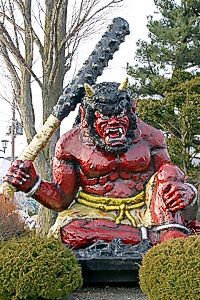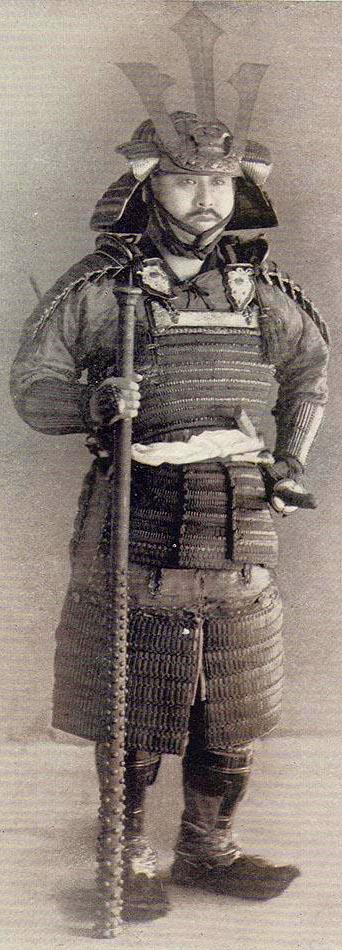Oni-ni Kanabo (dearu)
(*Oni and Kanabo #1)
(**Oni and Kanabo #2)
(***Real Warrior with Kanabo)
Looking up a word “Oni” in the dictionary, you will find the meaning as an ogre, a goblin, a fiend, a demon, and a devil. No matter what the definition may be, Japanese “Oni” symbolizes “the powerful.” Humans have no chance to win! On the other hand, “Kanabo” means a spiked club or truncheon used in feudal Japan as a weapon by Samurai and their retainers (https://en.wikipedia.org/wiki/Kanab%C5%8D).
As you can see in the pictures above, the entity with Kanabo looks really powerful. None of their enemies would ever try to challenge – That’s the combination of “Oni” and “Kanabo.” Accordingly, when you hear people say, “Oni-ni Kanabo,” they have a big relief, knowing they have got a support from someone/something very powerful.
So, “Oni-ni Kanabo (dearu)” is usually translated as “It makes one invulnerable [doubly powerful],” “It is additional strength [strength added to strength],” or “That is all that can be desired.”
Also, “Oni” has other meanings you might find very useful when you study Japanese language:
1) a tagger; it. – You’re it!/ Who will be the tagger now?
2) a creditor; a dun. – Mark is dunned for the payment of debts.
3) a demon/devil (figuratively); a zealot. – Tracy is a demon for work./ Rick is a devil for golf./ Lisa has a demoniac passion for literature.
Along with your enthusiasm (Oni),
my one-on-one Japanese lesson (Kanabo) is
“Oni-ni Kanabo dearu.”
Special Trial Lesson $19.99 (tax included)
ONLY 20 SPOTS AVAILABLE
TAKE ACTION NOW!!
[Attribution]
*”Oni”. Licensed under パブリック・ドメイン via ウィキメディア・コモンズ – https://commons.wikimedia.org/wiki/File:Oni.jpg#/media/File:Oni.jpg
**”OniWP”. Licensed under パブリック・ドメイン via ウィキメディア・コモンズ – https://commons.wikimedia.org/wiki/File:OniWP.jpg#/media/File:OniWP.jpg
***”Nanhoku-cho period samurai from “Military Costumes in Old Japan”, 1893″ by 不明 – http://asianhistory.about.com/od/japan/ig/Samurai-Image-Gallery/Tokugawa-era-samurai.htm. Licensed under パブリック・ドメイン via ウィキメディア・コモンズ – https://commons.wikimedia.org/wiki/File:Nanhoku-cho_period_samurai_from_%22Military_Costumes_in_Old_Japan%22,_1893.jpg#/media/File:Nanhoku-cho_period_samurai_from_%22Military_Costumes_in_Old_Japan%22,_1893.jpg






